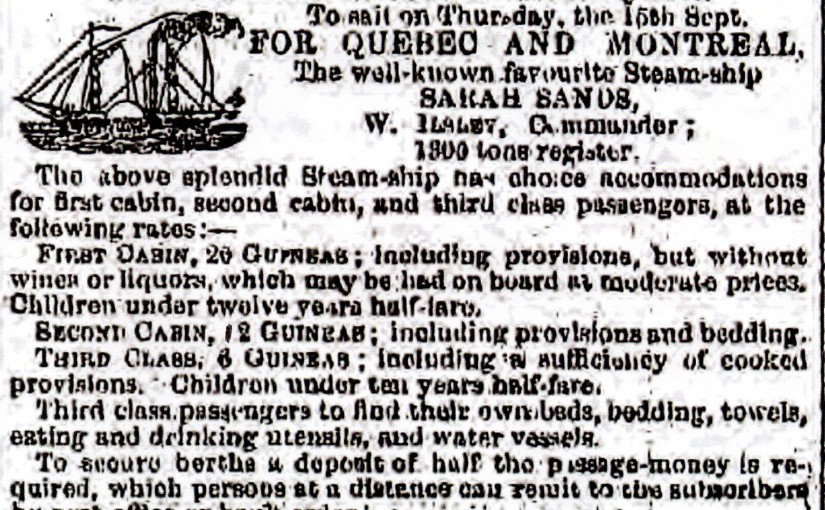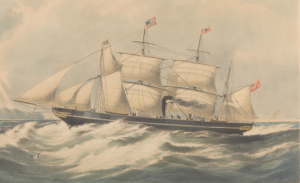Extract taken from, The Wreck of the Annie Jane. Part of a letter of complaint sent by the steerage passengers on the voyage that left Liverpool on the 16th of September 1853; published in the Montreal Chronicle
Firstly, we were stored in berths to contain three with barely sufficient room for two and provisions served of such an inferior quality that they could not be partaken of, the greater part being entirely rotten, consequently unfit for human food….. The passengers were generally stowed or berthed irrespective of sex, which tends greatly to promote immorality in all its demoralising effects.
The following list of names are passengers who left the Annie Jane after the first voyage; about eighty of the passengers on the Annie Jane refusing to go on the second voyage.
Thirty are known to have gone on the Sarah Sands which sailed on the 16th September 1853. These are all possible passengers; unfortunately the list of passengers published in Canada just said, after listing all the gentlemen and ladies “and 170 steerage passengers” .
Jane Tenlin
Charles Tenlin
Michael Tenlin
James Tenlin
David Thomas
Daniel Thomas
Henry Thomas
William Thomas
Thomas Thomas
George King
John Stobie
Edward Chainhen
Dennis Disrael
Jeramiah Porter
David Divisers
Edward Mockluyer
William Owen
William Davies
David Davies
Thomas Hodges
Thomas Hawkins
Alexander Kerr, joiner
John Curr
Thomas Gourlie
Dennis Driscon
Michael Lane
James Driver
Thomas Campbell
Lawrence Campbell
David Gunn
John Storry
David Jones
Rees Williams
Samuel Elliot
Shem Richards
Benjamin Powhes
Andrew Anderson
Thomas Young
John Scott Chalmers
John Treadwell
Fredrick Treadwell
Thomas Johns
William Gallatly
John Taylor, joiner
George Taylor, joiner
Henry Bayly
John Stranger
Image of the steamship Sarah Sands
Built in Liverpool the SS Sarah Sands was launched in 1846, just three years after SS Great Britain, and was only the second large, iron screw steamer to be built. Although intended to be powered by sail as much as possible, the Sarah Sands would use her engines when becalmed or when exiting or entering a harbour, the engines at that time were to inefficient to use for a complete Atlantic crossing.

